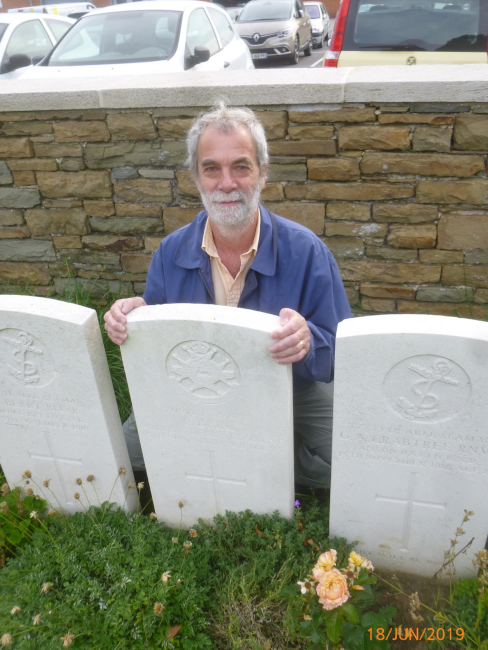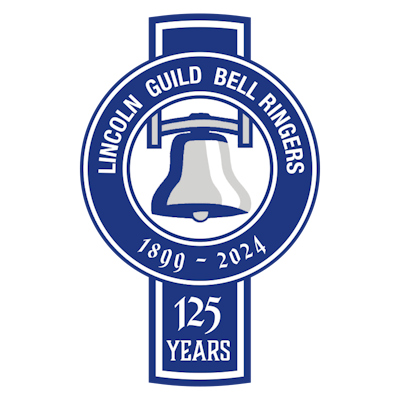Personal stories behind four WW1 commemorative peals,
by Chris Turner, Stow, Lincolnshire.
by Chris Turner, Stow, Lincolnshire.
This article was originally written for publication in the RW (No 5665) hence the references to the author coming from Stow, and that Scothern is close to Lincoln, which is obvious to our members but not necessarily to the wider ringing community.
1) Private Raymond Judge
My great uncle Raymond Judge died at Vimy Ridge in north east France on April 9th 1917. His body was never found and his name is on the beautiful Canadian Memorial at Vimy Ridge. As a young teenager, I rang a quarter peal at Kidlington, Oxon, the village where Raymond was born and bred, for Remembrance Sunday, conducted by his brother (my Grandad) Walter Judge. My Grandad told me about his brother and showed me his name on the Kidlington War Memorial next to the church. Back then I thought little of this and knew absolutely nothing about Vimy Ridge, but I realised it meant a lot to my Grandad. However, as the 100th anniversary of Raymond's death approached I discovered a great deal more about Vimy Ridge and my great uncle's part in it.
Raymond emigrated to Canada in 1911 and joined the Canadian forces in 1914, incidentally enlisting in London - the Ontario one! Knowing Raymond was in the 14th Battalion of the 1st Canadian Division I was able to pinpoint (via Nicholson's official reports) the likely spot where Raymond fell. Close by this spot is Nine Elms Commonwealth War Grave Cemetery and on visiting this cemetery in 2019, I discovered nine graves of soldiers from 14th Battalion who fell on April 9th 1917 whose identity are 'known unto God'. There has to be a fair chance that Raymond is buried in one of these nine unmarked graves. The photograph below shows me in front of this row of unmarked graves.
We rang a peal of Vimy Ridge Surprise Major at Kidlington on 9th April 2018 - unfortunately we failed to ring this peal 12 months earlier!
 |
 |
 |
2) Private Walter Mackfall
My home tower is Stow, in Lincolnshire. 24 men from Stow parish died during WW1, but none of them were ringers, so we did not have a specific 100th anniversary to ring a peal for. I then found out that one of these 24 men, Private Walter Mackfall, was the uncle of one of our ringers, so we rang a half muffled peal of Grandsire Triples on 23rd October 2017, the 100th anniversary of Private Mackfall's death, in memory of Private Mackfall and the other 23 men of Stow parish. Private Mackfall is buried at Lijssenthoek Military Cemetery, by Poperinge, in Belgium and this photograph shows my wife, Carolyn, paying her respects at his grave.
 |
 |
3) Private Edward Waby
I organised two commemorative peals at Scothern, by Lincoln, for two ringers who died in WW1. The first was on 1st March 2017 for Private Edward Waby. That could have been the end of this particular story, because at the time we rang the peal the only thing I knew about Private Waby was that he was a Scothern ringer and he died on 1st March 1917. But future events brought me to tears......
Carolyn and I went to Ypres in August 2017 to witness the blessing of the eight new bells for St George's Memorial Church in Ypres. Alan Regin organised a mini tour of Commonwealth War Grave Cemeteries in and around Ypres for these bells the day before they were blessed and installed in the church. At each cemetery the bells were taken to, Alan read out the names of ringers who were buried there. At Railway Dugouts Burial Ground (Transport Farm) Alan read out three names and the third name he read out was Private Waby of Scothern, Lincolnshire. I was stunned and immediately began to well up. Purely by chance I was at the cemetery where the man I rang a commemorative peal for six months earlier was buried. I asked Alan if he knew where Private Waby's grave was - what a silly question to ask, of course Alan knew and he took me straight there. The photograph below shows me at Private Waby's grave.
 |
4) Private Frederick Bell
The second Scothern ringer I arranged a commemorative peal for was Private Frederick Bell. The date was 15th November 2018, indicating Private Bell died after the armistice was signed on 11th November 1918 - not unusual, many soldiers died of their wounds after the armistice. I arrived at Scothern church quite early on the day and so had time to look round the church before we started the peal. I discovered that the villagers of Scothern had erected information boards for all their WW1 losses, including Privates Waby and Bell. Reading the board about Private Bell stunned me. He was in the British Expeditionary Force in 1914, so he was already in the army at the start of the war; fought at the Somme in 1916, at Passchendaele in 1917 and then around Cambrae during the final allied advance in 1918. He was fatally wounded in the morning of 11th November 1918, just hours before the guns fell silent at 11am that day. He died four days later. What a tragic story.
I visited Private Bell's grave in 2019. The Cambrae East Military Cemetery is tucked away in a small corner of a large German WW1 cemetery, which of course is consistent with Cambrae being on the German side of the Western Front for the vast majority of WW1. As the photograph below shows, it is also right next to a garage forecourt!
 |
 |
Chris Turner
